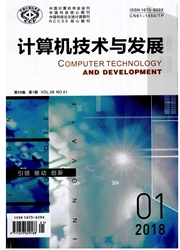

 中文摘要:
中文摘要:
三维局部约束模型(3DConstrained LocalModel,CLM-Z)算法,综合利用灰度和深度信息检测三维人脸数据中的特征点(如眼角、鼻尖和嘴角),实现了较高的检测精度。CLM—Z方法一般使用人脸位置和平均三维人脸模型进行初始化。设计了四个实验定量地分析CLM-Z参数初始化对算法精度的影响:在BU-4DFE库上评估CLM—Z算法精度;通过平移人脸边界框扰动平移参数的初始值;通过缩放人脸边界框扰动尺度参数的初始值;通过给定绕Y轴和z轴的旋转角扰动旋转参数的初始值。实验结果表明,CLM-Z算法可容忍平移扰动约为人脸宽的1/6,在(0.75,1.50)缩放范围内算法精度不会下降,可容忍Y轴和Z轴旋转角约20°。基于以上评估结果,进一步提出在纹理图像上检测特征点作为初始化,然后再进行CLM-Z迭代。在BU-4DFE数据库上的评估结果证明,该初始化方法能有效提升CLM—Z方法的特征点定位精度。
 英文摘要:
英文摘要:
3 D Constrained Local Model (CLM-Z) achieves high accuracy in detecting 3D facial landmarks (e. g. , eye comers, nose tip and mouth comers) via taking full advantage of both intensity and depth information. CLM-Z is conventionally initialized based on the location of face and mean 3D facial model. The effect of CLM-Z initialization on detection accuracy is evaluated quantitively by carrying out the following experiments:assessing the accuracy of CLM-Z with the conventional initialization method on the BU-4DFE database, translating the face to perturb the initial value of translation parameter, varying the size of detected face to perturb the initial value of scale parameter, varying the rotation angles around y-axis and z-axis to perturb the initial value of rotation parameter. Experimental results show that CLM-Z can tolerate translations up to approximately 1/6 of the width of the face, scalings between 0.75 and 1.50, and rota- tions within 20 degrees. Based on the above evaluation results,a novel initiaiization method is proposed further that exploits facial land- marks detected firstly on 2D texture images. Experiments on the BU-4DFE database show that the proposed initialization method can suc- cessfully improve the 3D landmark localization accuracy of CLM-Z approach.
 同期刊论文项目
同期刊论文项目
 同项目期刊论文
同项目期刊论文
 期刊信息
期刊信息
